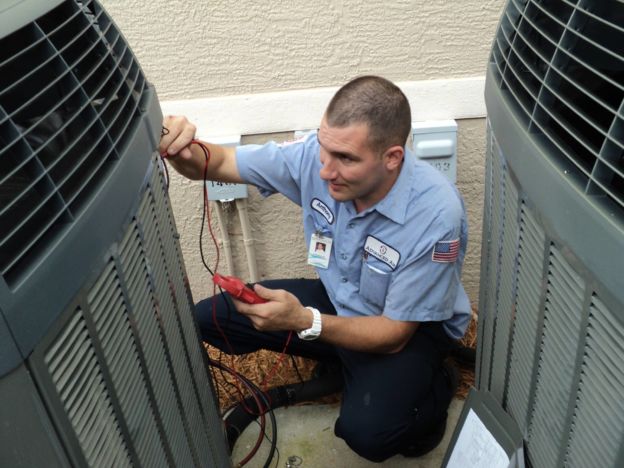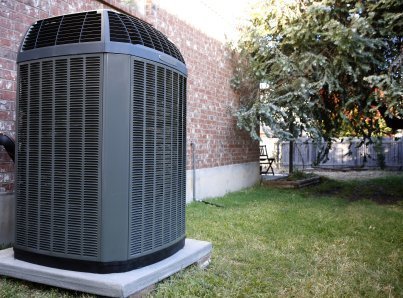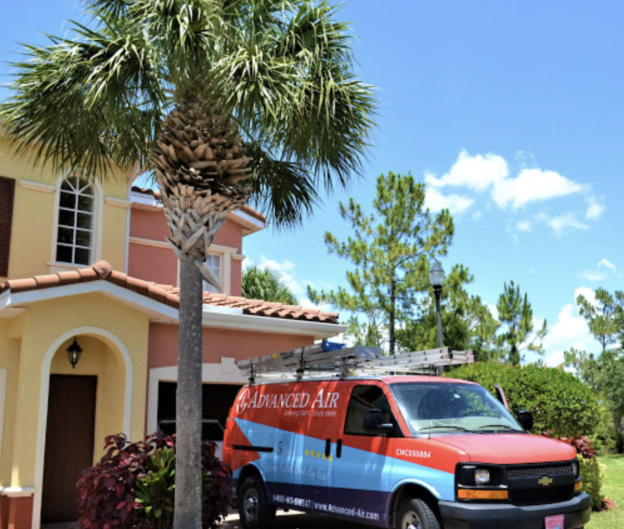How Does a Central Split System Air Conditioner Work?
October 20, 2021

Contact Advanced Air to inspect your outdoor AC unit.
The most common type of air conditioner is a central split system. Ideally, you would never have any problems with your AC, and you could go about your day without a thought about the inner workings of the system. However, ACs do need to be maintained, repaired, or replaced over time.
To help you make informed decisions during these situations, knowing how an air conditioner works is helpful. In this article, we’ll cover the following topics:
- What is central air conditioning?
- What are the parts of a central AC system?
- How does a central split system AC work?
Let’s dive right in to learn more about your AC system and how it keeps you cool during these hot and humid Florida summers.
Need an honest and reliable HVAC contractor in Southwest Florida? At Advanced Air, we promise 5-star service at every service appointment. Our experienced technicians can answer any of your AC questions and provide quality AC repair and installation.
What Is Central Air Conditioning?
A central split system air conditioner circulates cool air through the supply and return duct systems in your home. The supply and return ducts are openings in your walls, floors, or ceilings covered by grills. After the supply ducts push out cool air, it circulates through your home. Once it warms up in the process, it flows back to the AC unit through the return ducts and registers to be cooled once again.
What Are the Parts of a Central AC System?

All central split AC systems have an outdoor unit.
A central AC has many complex parts that enable it to do its job of keeping you cool, including:
- A thermostat: This control system allows you to set the desired temperature for your home.
- An indoor unit: The indoor unit is inside your home and contains the evaporator coil, which holds refrigerant, a chemical compound that absorbs heat.
- An outdoor unit: Your outdoor AC contains a condenser coil and the compressor, which pumps refrigerant throughout the system.
- A system of air ducts: These ducts carry the cooled air to the different rooms in your home.
- Refrigerant lines: These lines connect the inside and outside AC units.
Now that you’re familiar with the essential parts, we'll look at how they all work together to keep your home comfortable and cool during the hot summer months in Florida.
How Does a Central Split System AC Work?

Air conditioners remove heat from the air, similar to how turning off a switch removes light.
AC’s don’t create cool air; they just remove heat from the air. This concept can be confusing to understand, so let’s take a closer look at how it works with a quick example.
Consider this: How do you make a room dark? You flip the light switch and draw the blinds. But you didn’t actually “create” that darkness. You just removed the light from the room, right?
In the same way, cool air isn’t “created.” It’s simply air that has had heat removed from it. This heat removal process is the underlying concept of how air conditioners work.
Your central AC extracts heat from the air using a process called heat transfer, which consists of the following three stages:
1. Evaporation:
Your indoor AC unit contains a fan, which draws in the warm air from your home and blows it over the cold evaporator coil. The coil contains refrigerant, a heat transfer fluid that absorbs heat from the air, making it cooler. The cold air is pushed back into your home. Meanwhile, the heat captured inside the refrigerant moves outdoors.
2. Compression:
Outside, the compressor increases the pressure of the refrigerant, making it hotter than the temperature of the air outside. As a result, the outdoor air naturally absorbs the heat in the refrigerant. Once the refrigerant turns into a vapor, the compressor pushes it into the condenser coil.
3. Condensation:
The fan in your outdoor AC unit blows air across the hot condenser coil, accelerating the condensation process. As the refrigerant releases its heat, it becomes cold again, and the heat absorption cycle continues. The refrigerant flows back and forth until your home reaches the temperature you’ve set on your thermostat.
Contact the Pros at Advanced Air With Any Additional Questions.

The AC technicians at Advanced Air are always ready to help.
At Advanced Air, our knowledgeable and meticulous technicians are always willing to go the extra mile to ensure that you’re satisfied. If you have questions about your central AC, need help diagnosing a problem and repairing your AC, or you’d like advice on installing a new AC, we're always here for you. Contact us today and find out why we have hundreds of 5-star reviews.
- Posted in:
- Air Conditioning

